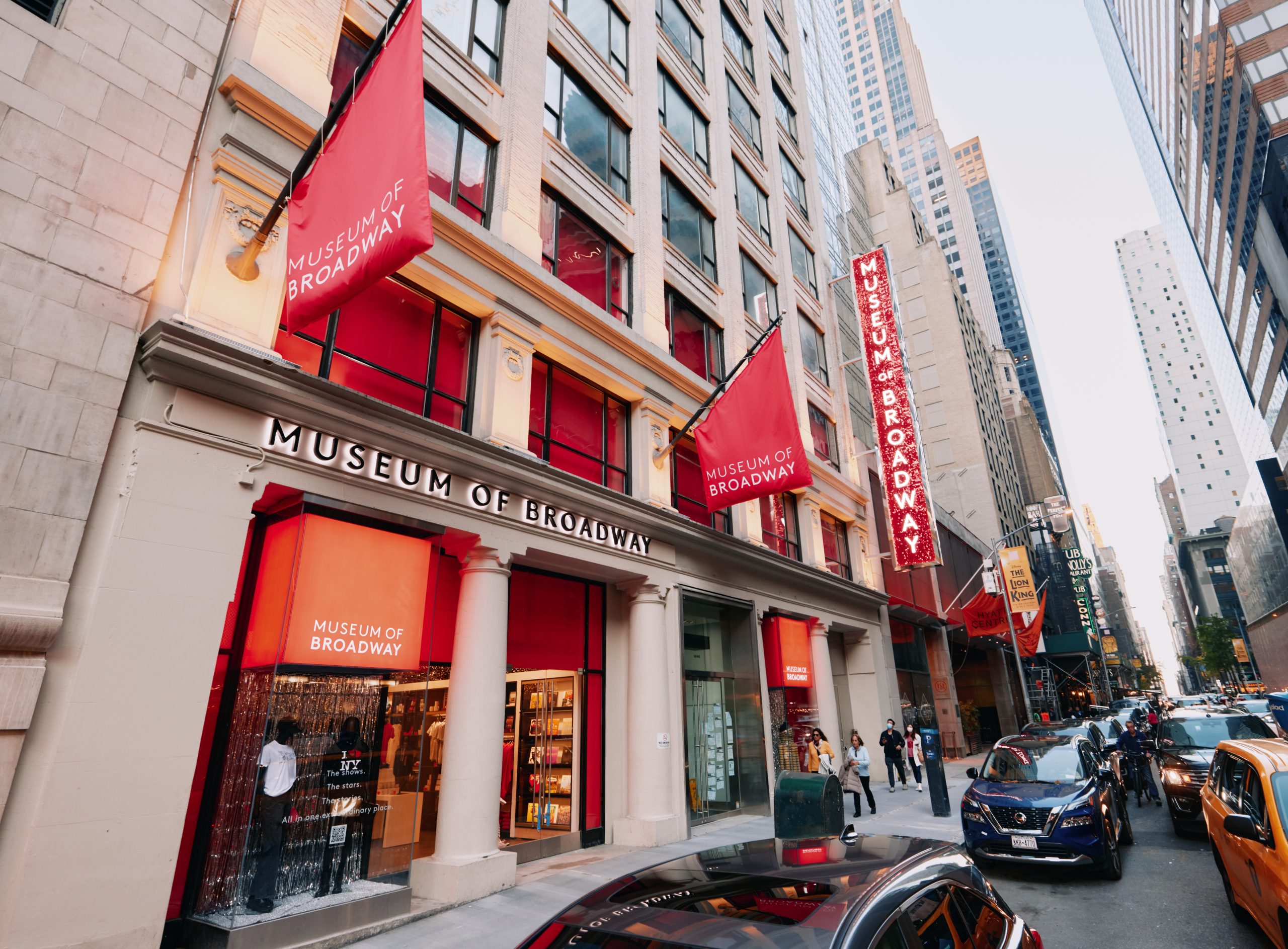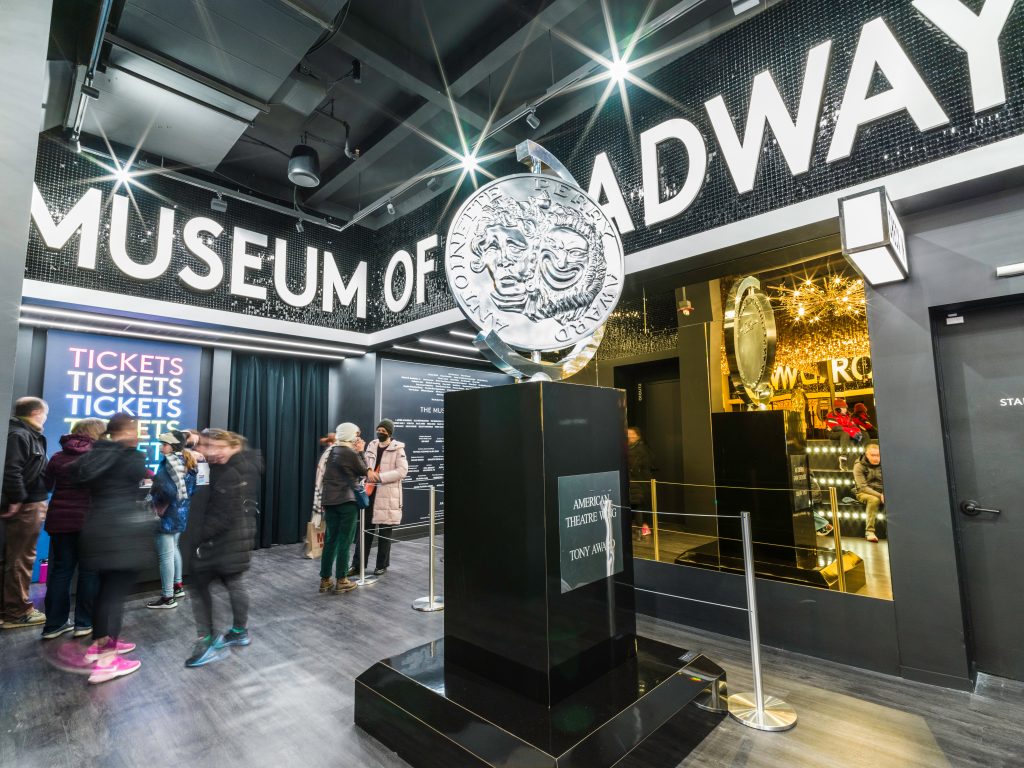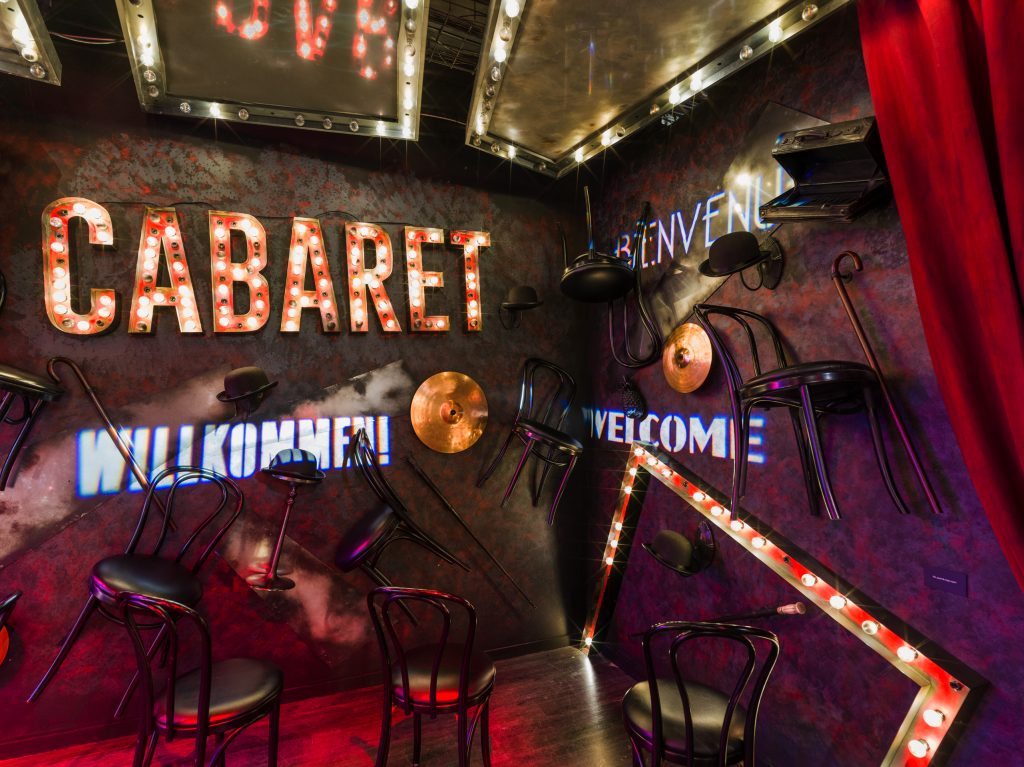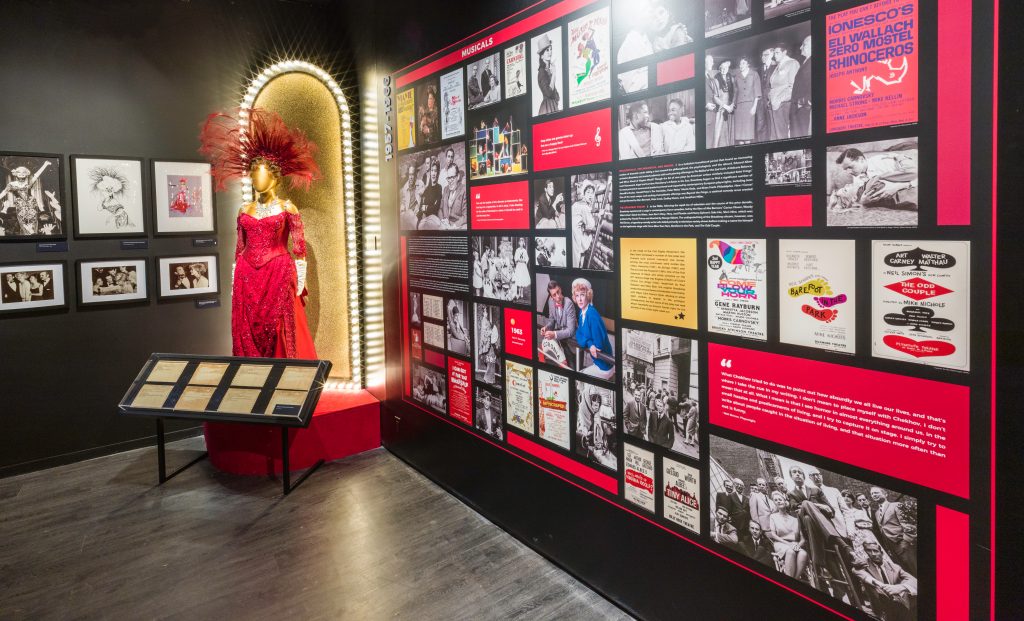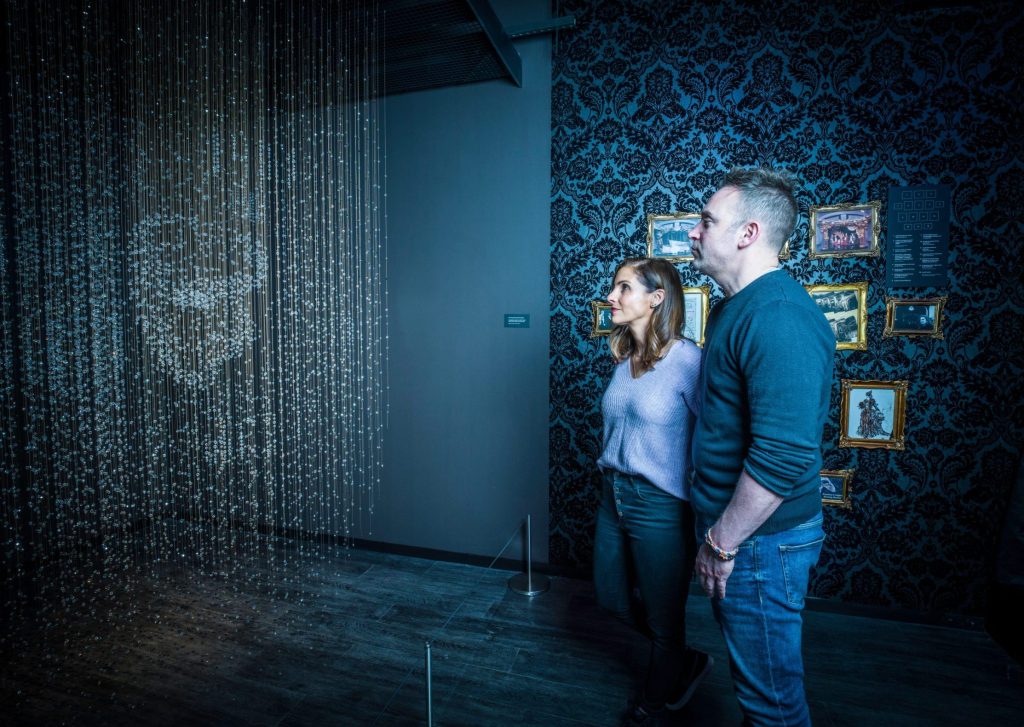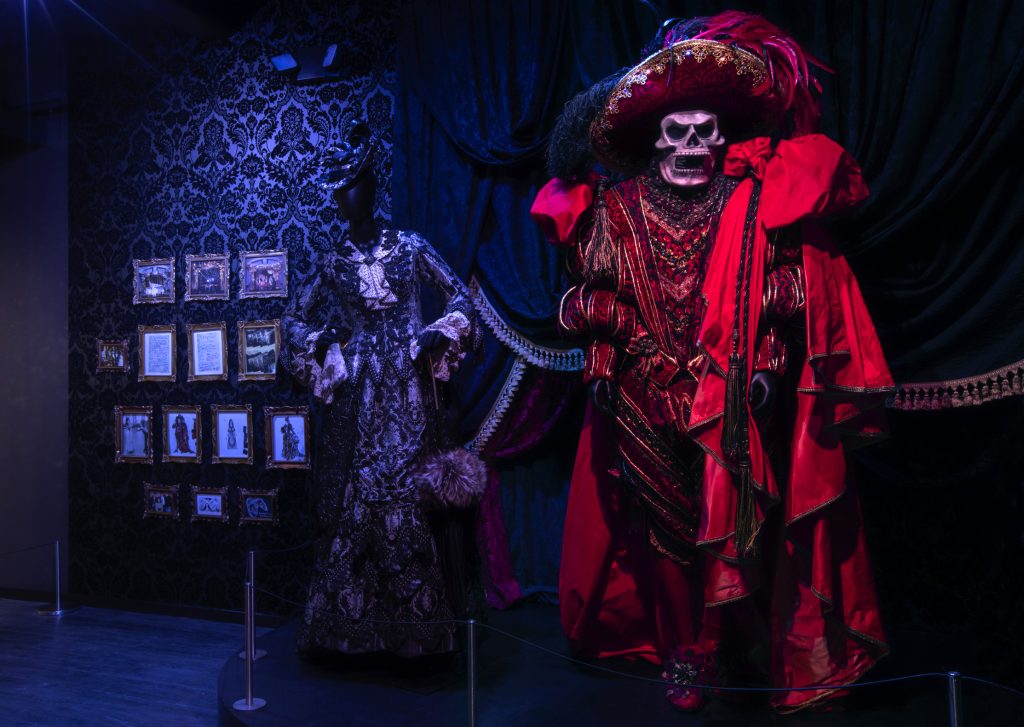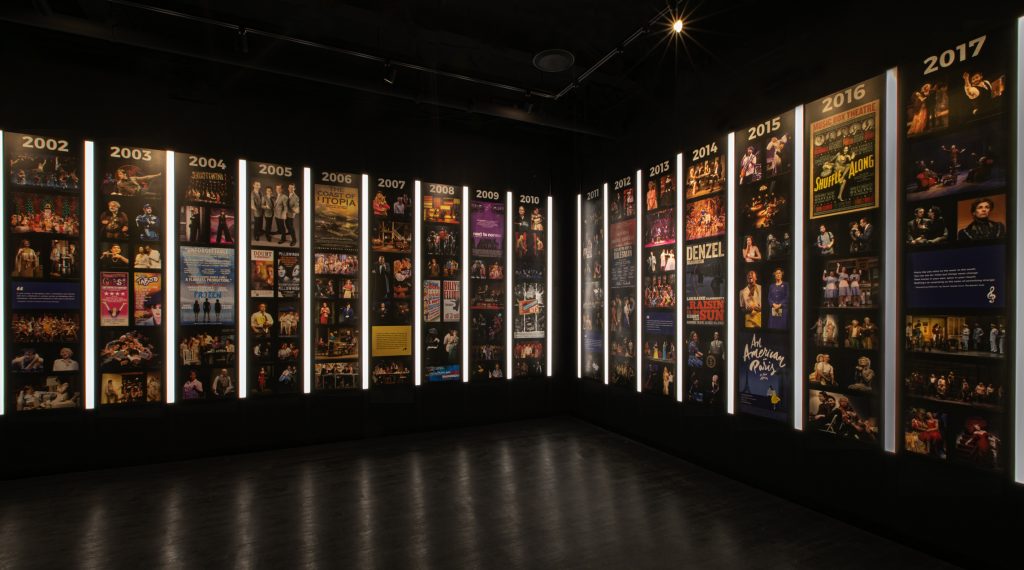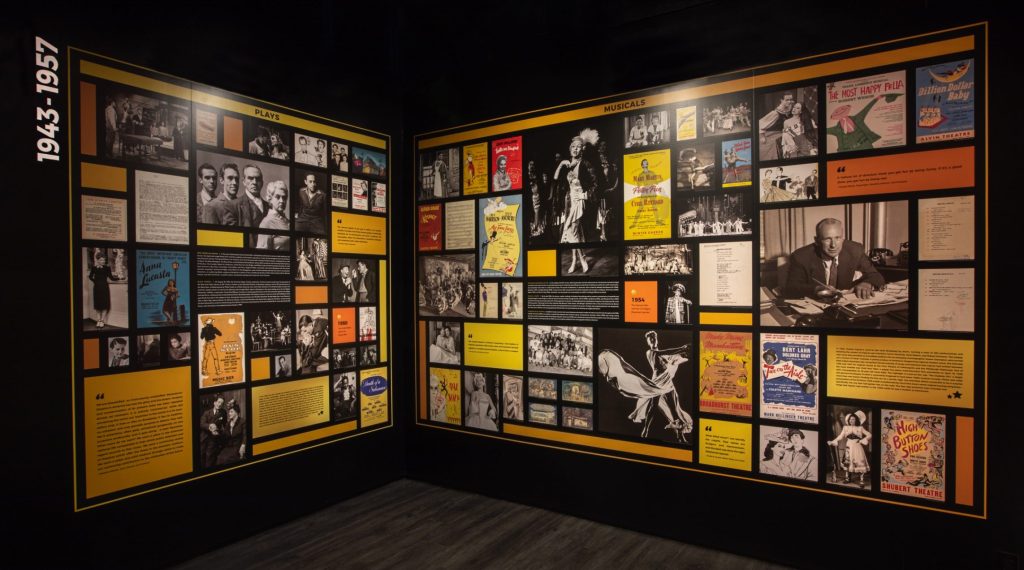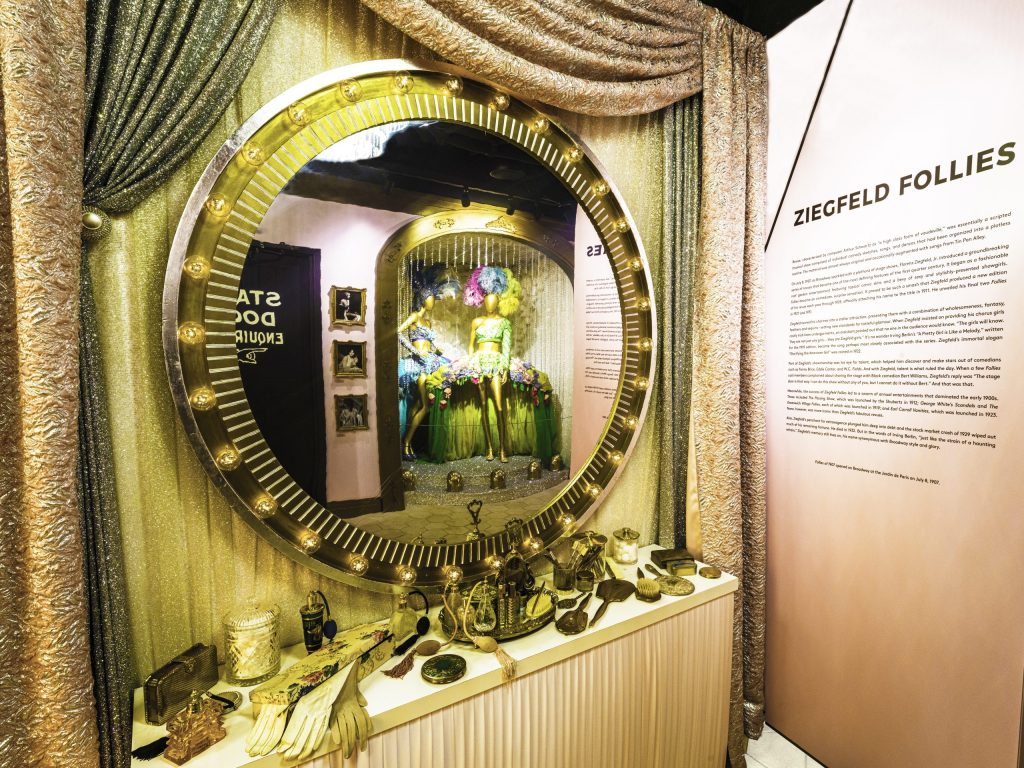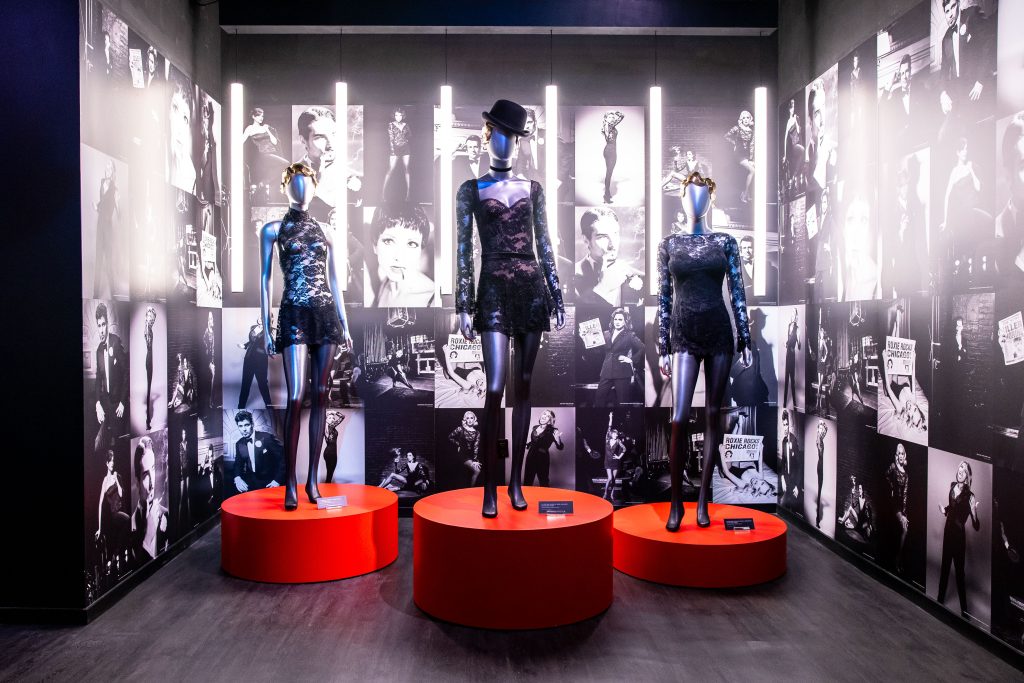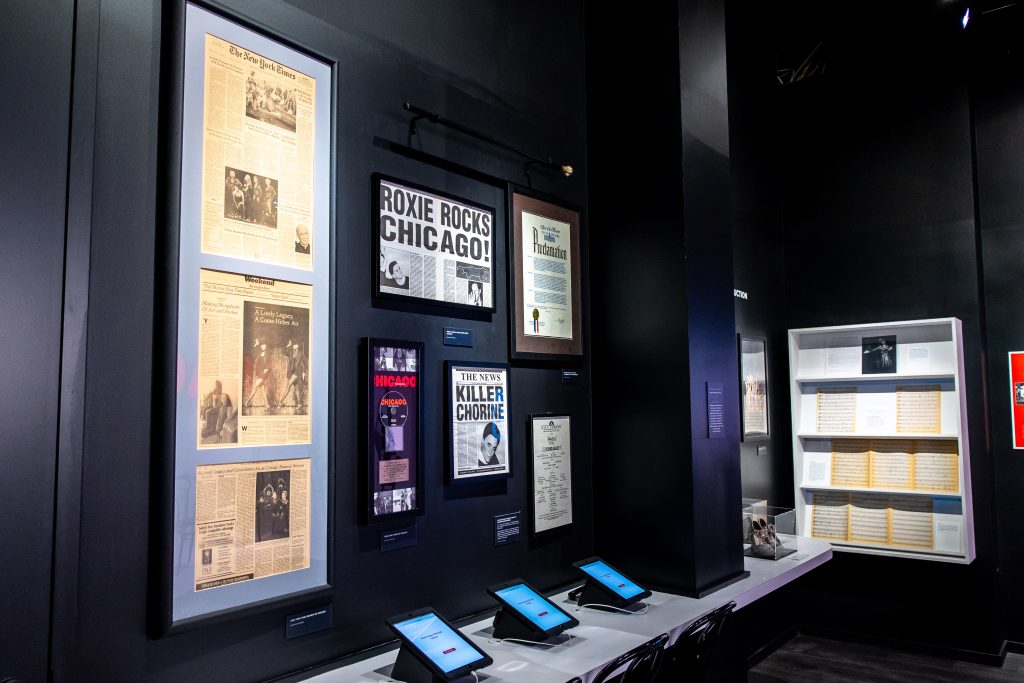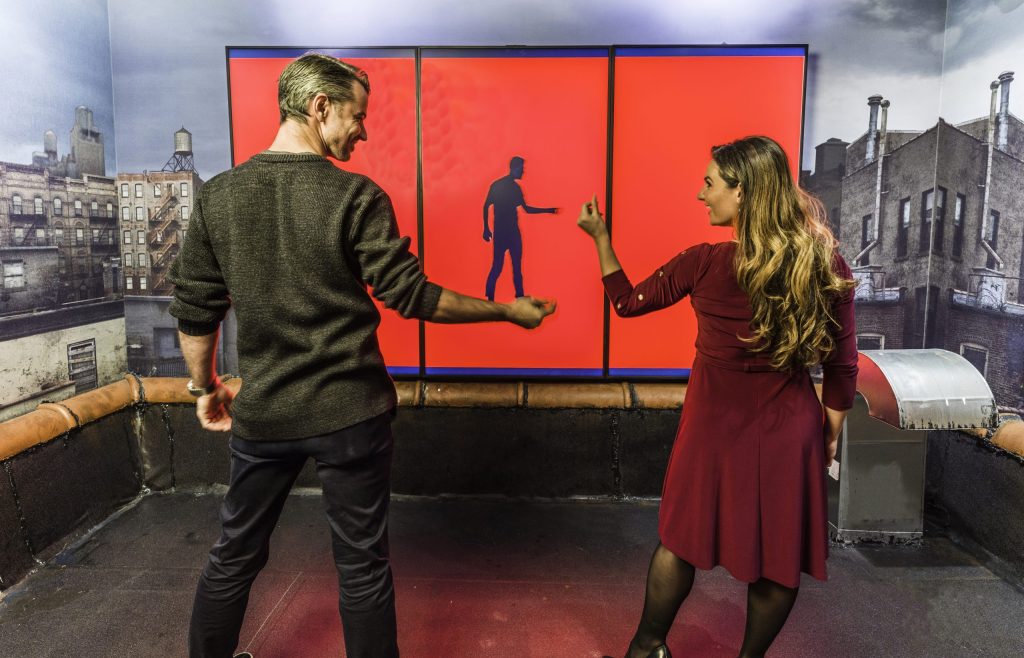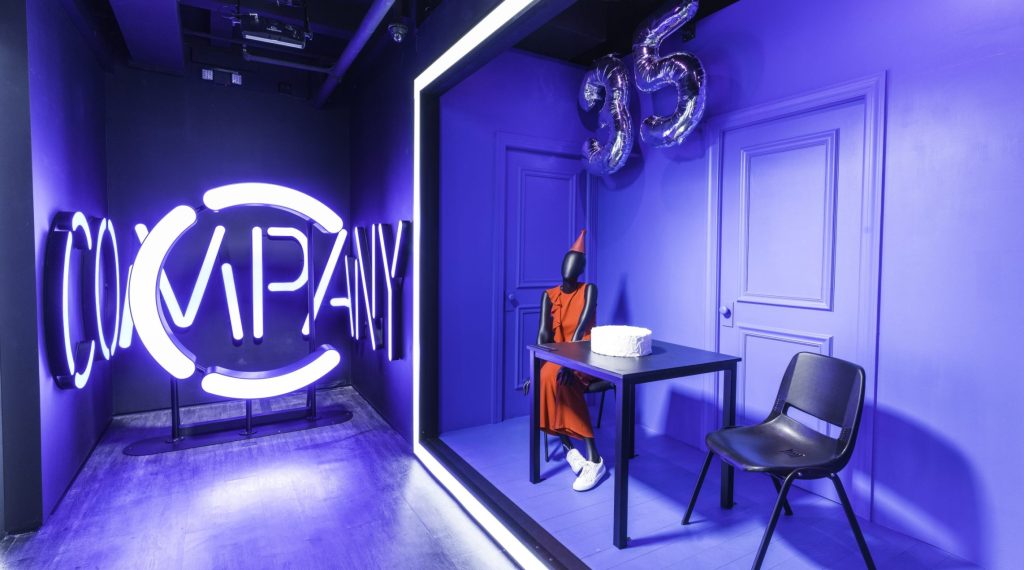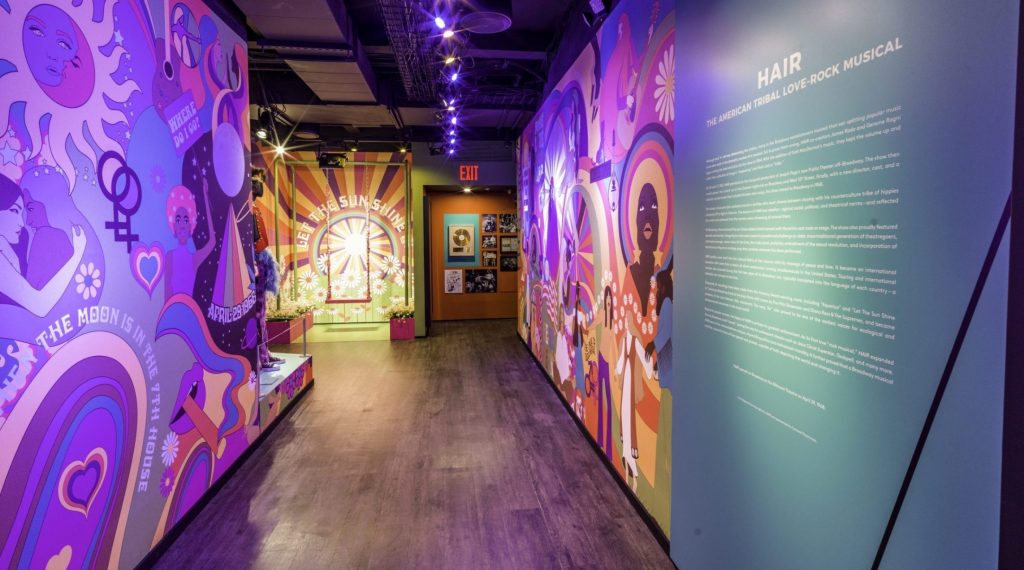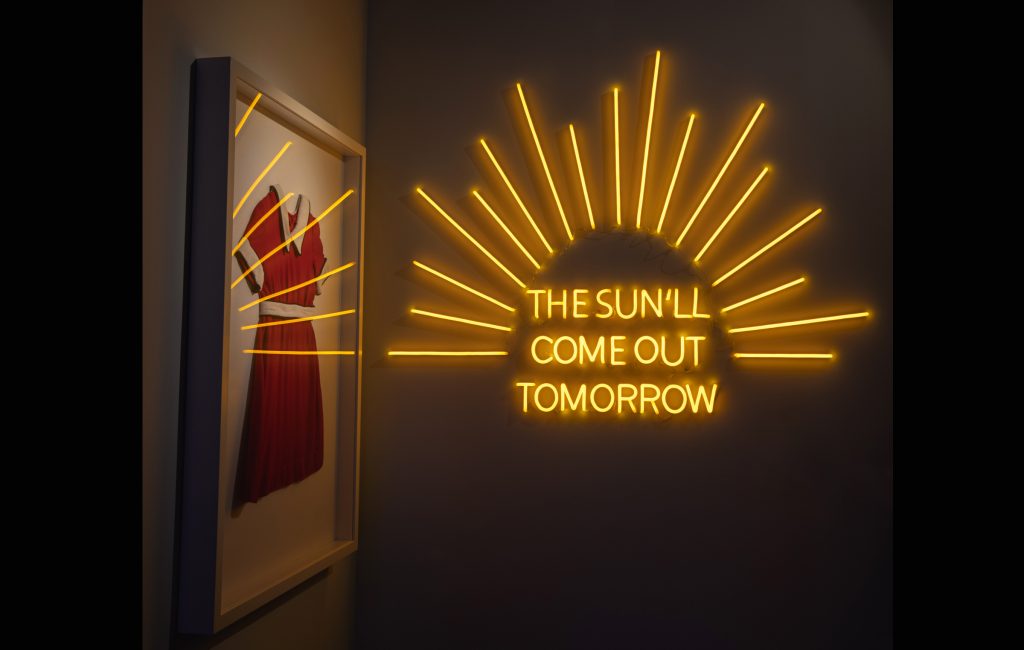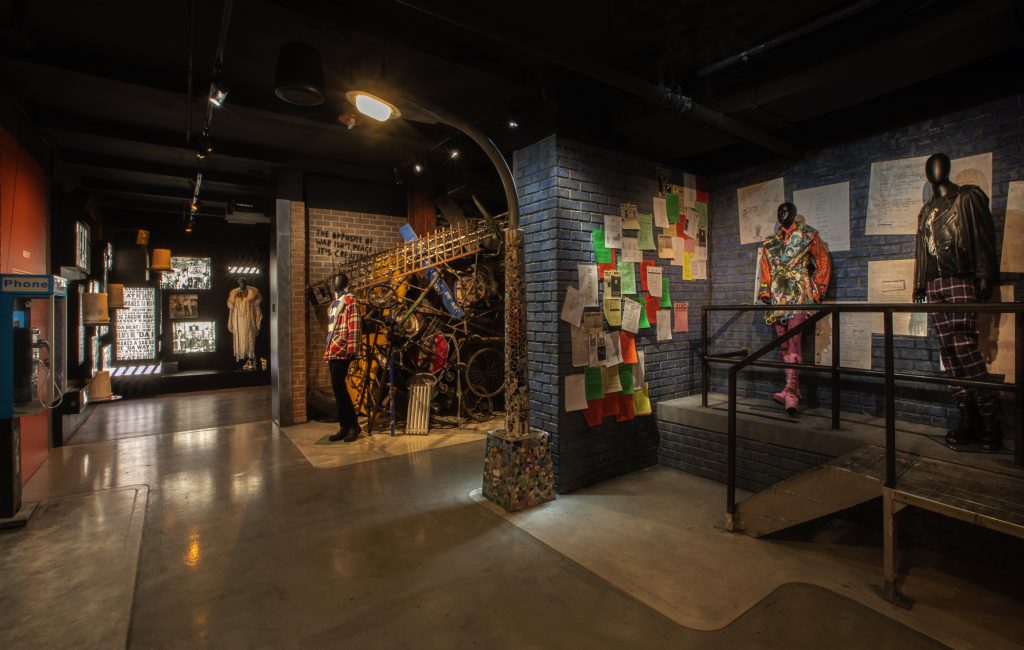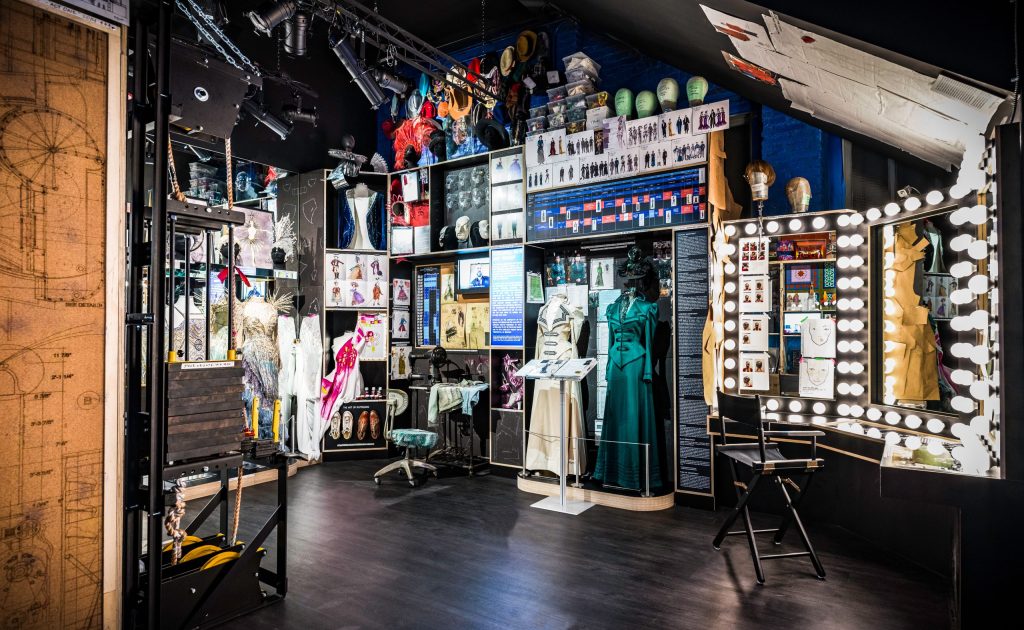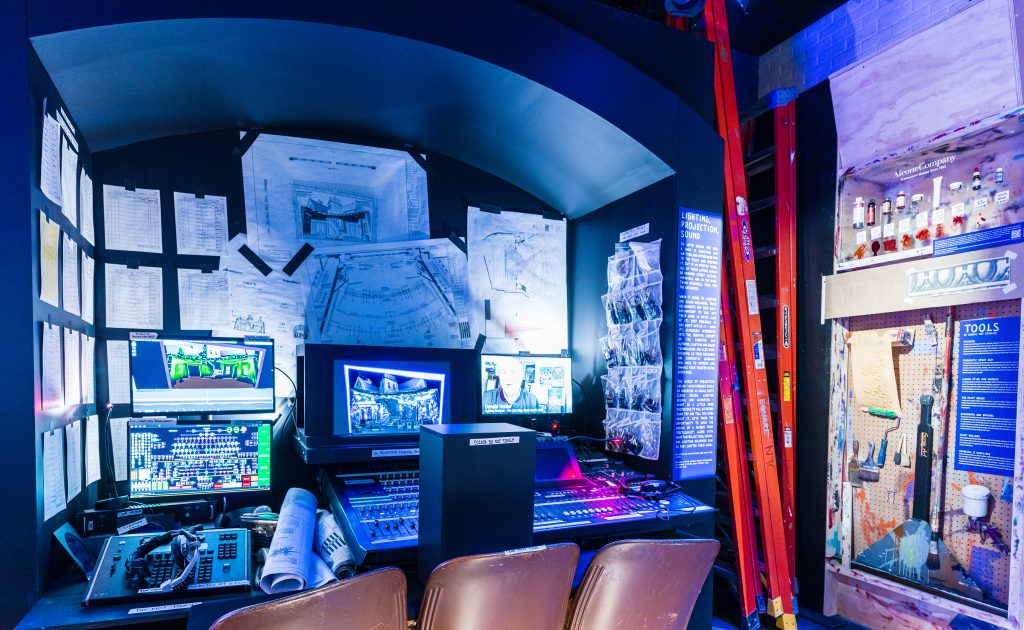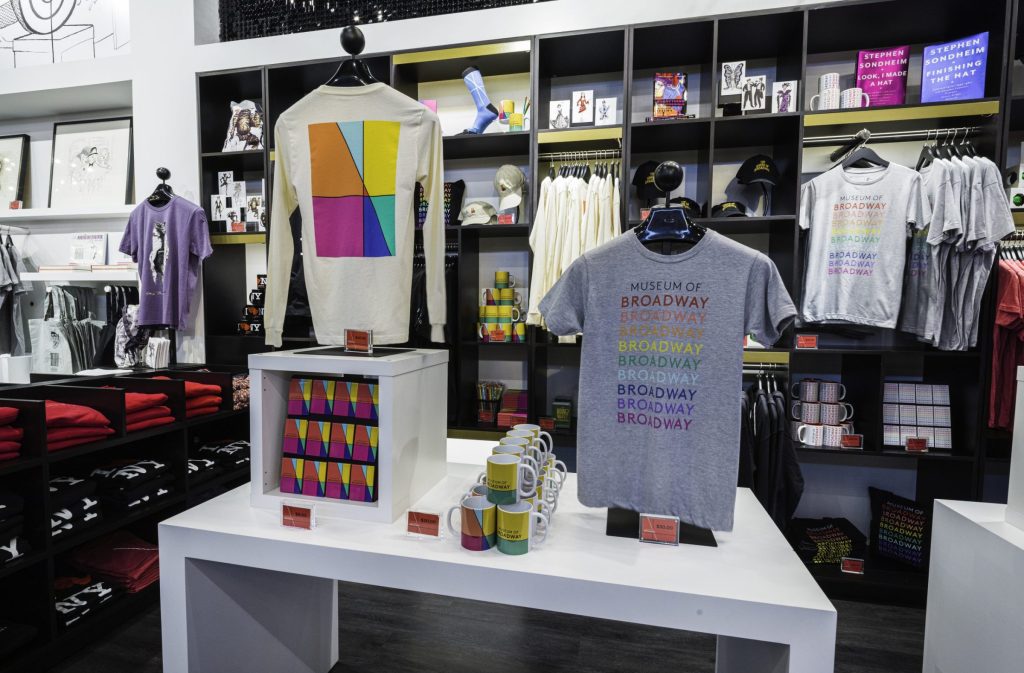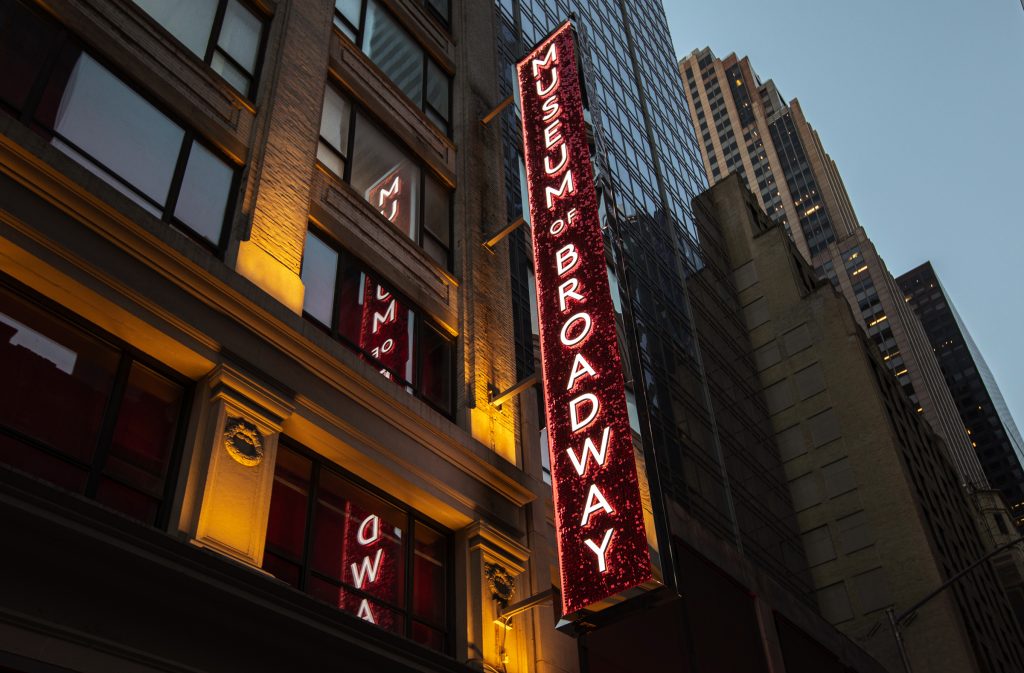The Museum of Broadway, the first museum dedicated to this home-grown American performance form, celebrated its inaugural year on November 15, 2023. Located on 45th and Broadway in the heart of Times Square, Manhattan, the museum was established by Tony Award nominated Broadway producer, Julie Boardman and Diane Nicoletti, founder of an award-winning fan activation company. Prior to the two college friends pursuing their idea for the museum, the multibillion-dollar Broadway industry lacked a comprehensive museum.
When a ground floor Irish pub closed during the pandemic, and two floors of office space above became available, Boardman and Nicoletti, acquired and gut-renovated the 26,000 square feet. Embracing the razzmatazz of Broadway, 1,000 original artifacts, mementos, and photographs that profile over 500 productions are exhibited. Curator Ben West states that the museum will be continually updated. “Some have never seen a Broadway show. Others have seen a lot. There is so much content and history. The museum is fun, bright and colorful and intended for a full age spectrum. We tried to make something for everyone,” explains Boardman.
Focused on pivotal shows that changed the course of Broadway, the museum charts a comprehensive and unfolding timeline on walls lined from floor to ceiling with quotes, photographs, and fun facts, while imparting historical contextualization. Fifteen immersive musical exhibits including The Ziegfeld Follies, Show Boat, Oklahoma!, West Side Story, Hair, Rent, and the latest hit Six, were designed by celebrated Broadway scenic designers. Important Black and women innovators are acknowledged. Listening stations are located throughout.
Museum doors open to the Map Room that features a four-minute film of the history of Broadway. Following are the Timeline rooms arranged by era. The bulk of the museum charts a comprehensive Broadway timeline that explains the historical context of each era and highlights the pivotal shows. The rooms are arranged by date and follow one after the other. The museum finishes with an overview entitled the Making of a Broadway Show. Entering and exiting the museum through a storefront retail boutique of Broadway merchandise reminds us that Broadway is a commercial enterprise.
To reach the third floor Map Room, visitors climb flights of stairs (elevator service is available). Greeted by a photograph of a life-sized woman dancer stretching in a stairwell, labels explain that dressing rooms are small. As a result, larger areas in, and around the theater, including alleyways, are sought by performers for adequate warm-up space. Broadway stars decorate their dressing rooms with curtains, carpets and wallpaper, whereas the ensemble displays photographs and keepsakes at their places. “We hear and feel what it’s like to be backstage,” remarks Boardman. As we journey upward, a male voice calls 15 minutes and 5 minutes to places. It feels as if the visitor has been called to places, too.
The first documented theatrical production played in 1732 in Manhattan’s financial district, but as real estate prices rose, productions were forced uptown. Theaters moved from Union, to Madison, to Herald and finally to Times Square. Broadway, known as The Great White Way for its early white streetlights and the illumination of theaters, runs from 41st to 54th Streets between Sixth and Ninth Avenues.
Inspired by minstrelsy and vaudeville, modern day Broadway was launched in 1907 with The Ziegfeld Follies (after the Folies Bergères of Paris), “a high-class form of vaudeville,” said the composer, Arthur Schwartz. Pink walls lined with feathers and Swarovski crystals grace this exhibit. Multi-colored perfume bottles from the period are assembled on a makeup table, and opulent 100-year-old costumes are exhibited. A portrait of Florenz Ziegfeld gazes at the photographs of his scantily clad stars as songs associated with the Follies are broadcast, such as A Pretty Girl is Like a Melody. Many of the performers went on to become Hollywood stars.
The Oklahoma! exhibit features an interview with Agnes de Mille, the pioneering choreographer who integrated choreography and plot. De Mille, viewed on a monitor, recounts her conversation with the producer. She tells him that missing from Oklahoma! is sex. The result is de Mille’s renowned Dream Ballet where we watch a male and female dancer lightly kiss and innocently cavort, racy for 1943. We amble between dried cornstalks to reach a miniature barn on a shelf, illustrating the lyrics “the corn is as high as an elephants’ eye,” from the song, Oh, What a Beautiful Mornin.
A small area housed a large monitor on which West Side Story (1957) ballet phenom Robbie Fairchild and the dynamic Tonaril Sade Vasquez dipped, shook, and slid, encouraging onlookers to do the same. An original jacket from the musical is displayed as tunes accompany. One eye-catching rehearsal photograph shows Jerome Robbins, choreographer and director, dancing with his cast. They wear beat up dance clothes, kneepads, and sneakers.
The AIDS crisis room features Tony Kushner’s Angels in America, 1993, and a wall treatment incorporating the names of those in the theater community who died. The Museum of Broadway, on their anniversary, donated $100,000 to Broadway Cares/Equity Fights AIDS, representing a $1 of each ticket sold. “We pause, reflect and remember those we lost,” remarks Boardman.
We move onto to Rent, 1996, where listeners hear the comments of the casting director on a phone in a booth from the era. The original Simba and Nala masks from The Lion King, 1997, are exhibited, along with mockups of set pieces. The Producers, 2001, a musical that originated from a movie, displays a large desk, a black dial phone and a fountain pen.
SIX, the latest Tony Award-winning hit, completes the Timeline. It expresses a “boldly revisionist narrative,” states Boardman, an “unapologetic celebration of female empowerment.” The exhibit, extended through April 28, 2024, features costumes, set installations, a broadcast of the opening-night cast recording, fan art, and the royal throne on which to take selfies.
In the final rooms, entitled the Making of a Broadway Show, observations are screened on numerous monitors of those working from inception to production. Says Boardman, “This shows you the job you can have in the theater, even if you’re not on stage, such as accountant, marketing person, and dresser.”
“The more you go to the theatre and the more you hear stories that you aren’t necessarily familiar with, the more open you become to embracing other perspectives,” asserts Lynn Nottage, Pulitzer prize-winning playwright.
By Catherine Tharin, Writer & Reporter:The Dance Enthusiast, Side of Culture, WAMC/Northeast Public Radio, The Boston Globe

